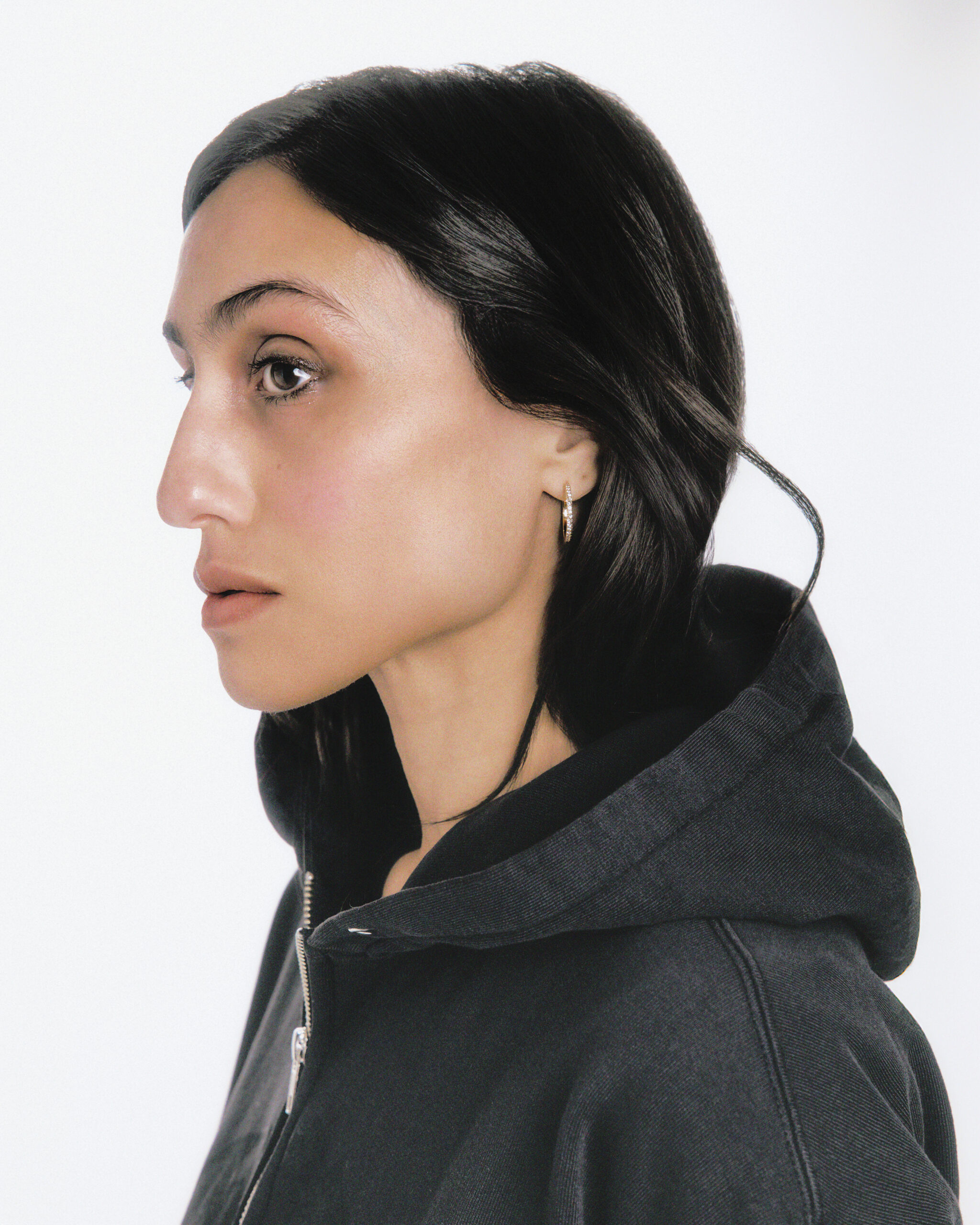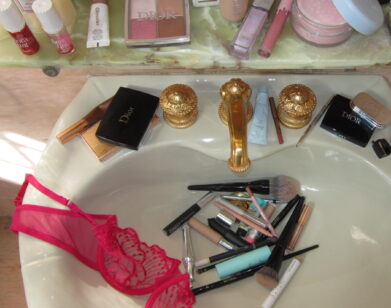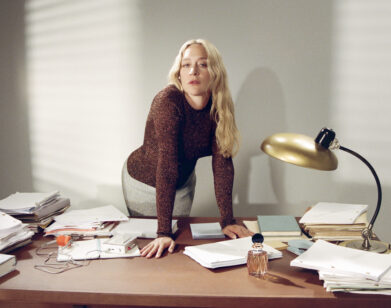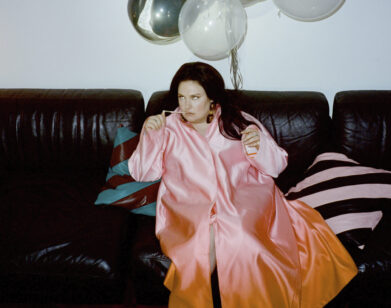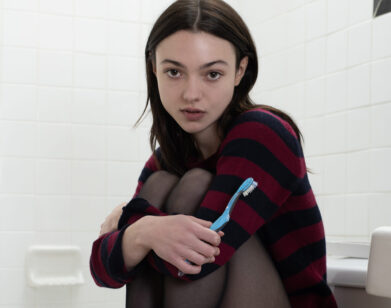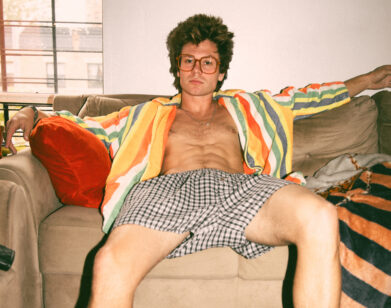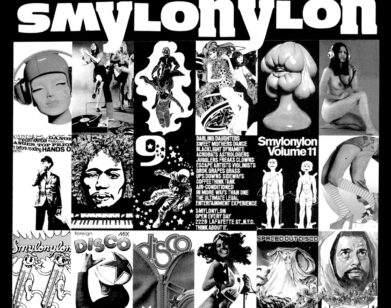DIRECTOR
Durga Chew-Bose on Bonjour Tristesse and the Beauty of Being a First-Time Filmmaker
It’s not easy remaking a beloved piece of 20th century cinema, but Durga Chew-Bose, the screenwriter and director of Bonjour Tristesse, isn’t so concerned with the past. Instead, the author and former SSENSE editor was interested in making François Sagan’s groundbreaking 1954 novella her own. In Chew-Bose’s version, the precocious Cecile (played by Lily McInerny), a 17-year-old who gets caught up in her playboy father’s affairs, isn’t as scandalized as the character in Otto Preminger’s 1958 adaptation. “I think that so much of coming into yourself is fraught and inelegant,” Chew-Bose tells our senior editor, Taylore Scarabelli. “It’s actually quiet and humiliating… And I wanted to make that very clear.”
———
TAYLORE SCARABELLI: I want to start off asking what made you pivot from writing and editing into directing? Was that something you always dreamed of?
DURGA CHEW-BOSE: I don’t think I’m someone who has five-year plans. I don’t expect each thing I do to be a rung on a ladder. I think it was just the result of immersing myself in film for so many years as an audience member, just the pure awe and miracle of it, and then writing about it and then having friends who are filmmakers or who work in film. It became a community that I was living in. So much of my book has film in it as well, so when the producers approached me as a writer, the jump didn’t feel like a leap. It felt more like a natural progression.
SCARABELLI: Totally. I was revisiting your book last night and that first essay—you’re almost a film historian. Did you feel pressure directing an adaptation of a book that’s already been turned into a lauded film?
CHEW-BOSE: I love the Otto Preminger version a lot and people love talking about that film so it was definitely orbiting us. It came out four or five years after the book was published, so it was part of the François Sagan lore and the excitement and the controversy around that book. And in some ways because it was so major, it was almost easier for me to ignore it and to not let the noise in. Deciding early on that we were adapting the book and not making a remake of the film provided a lot of calm and focus too.
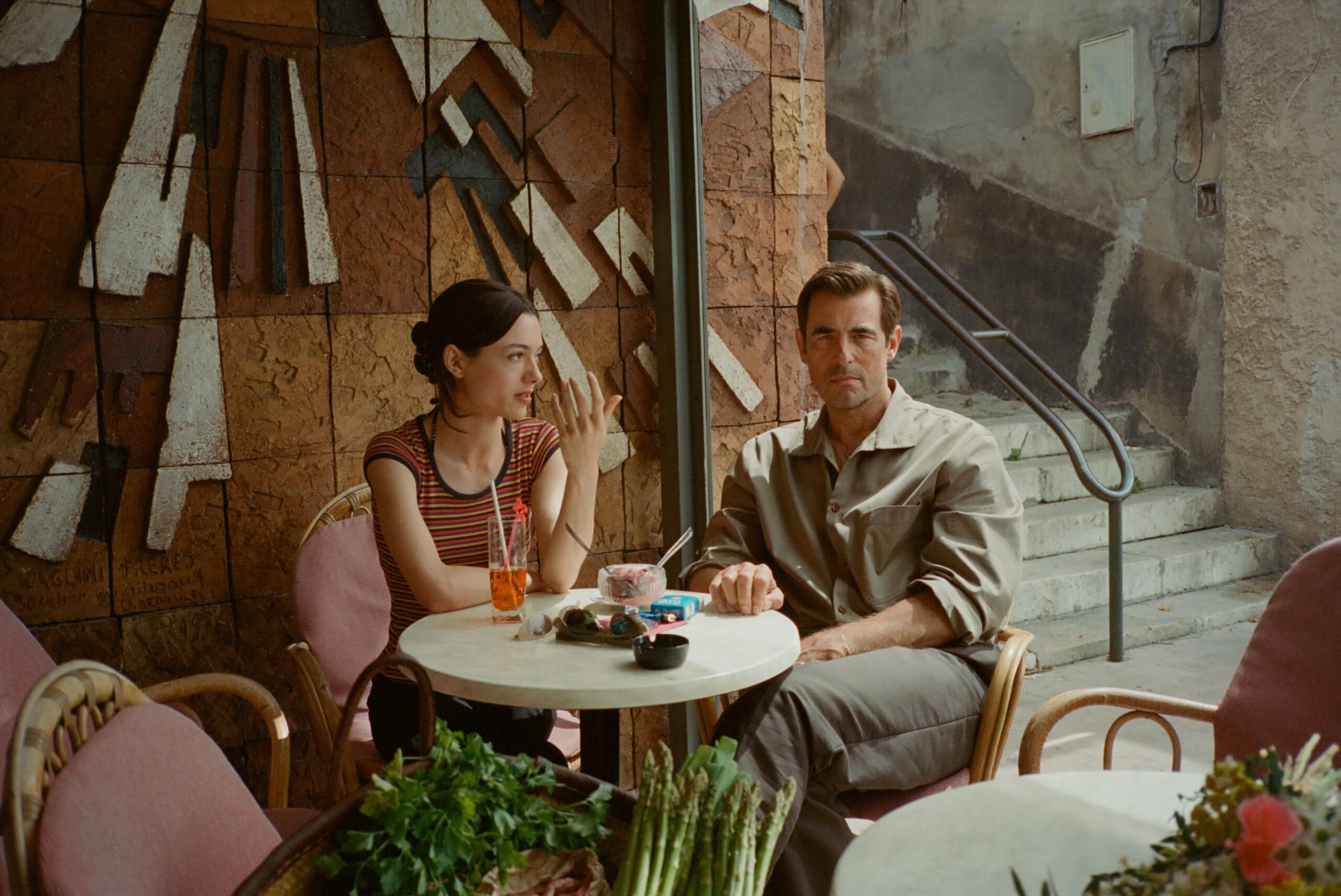
Behind the Scenes of Bonjour Tristesse, photographed by Miyako Bellizzi.
SCARABELLI: I’m curious about your take on some of the characters and how it departs from both the book and the original film—particularly Elsa. She’s so much more confident and worldly and unique compared to the more one-note character that we meet in the book. I’m wondering if you can speak to that choice.
CHEW-BOSE: From the beginning I wanted to make sure that our version was going to feel additive to the book and to the Otto Preminger film. I saw a woman’s name in the book that not much was happening to, so Elsa to me was an opportunity to use my voice and add another female perspective to Cecile’s big summer. Another card she could turn and be like, “Well, what about this woman and her way of being?” She was a person that Cecile could have a confessional conversation with that actually reveals a lot about the world and what it means to navigate it as a woman. And Nailia Harzoune, who we cast as Elsa, brought so much impossible coolness to it, too. She was just a real joy to work with.
SCARABELLI: The book doesn’t have much in the way of dialogue, so how did you navigate that while adapting the script?
CHEW-BOSE: Yeah. It’s narrated and we decided we weren’t going to have narration in the film, but still hold that observational voice that François Sagan had in her book. I think honestly it was a question of rhythm, finding our way in and out of scenes. I was always trying to find out what was the exit strategy or how we could land in the middle of a moment and dialogue seems like a great way to do that, but I also wanted it to feel a bit heightened and mannered and poetic.
SCARABELLI: And it does. It’s so elevated, and I think that adds to the timeless feel of this film. Cecile is on her phone all the time, but you don’t see what she’s looking at, and this character isn’t necessarily speaking how you would imagine a Gen Z person would be. That’s part of her maturity as the result of spending so much time around adults, but beyond that there’s something enduring about the overall vibe of the film. The setting helps. Who was your cinematopher and how was it navigating that relationship?
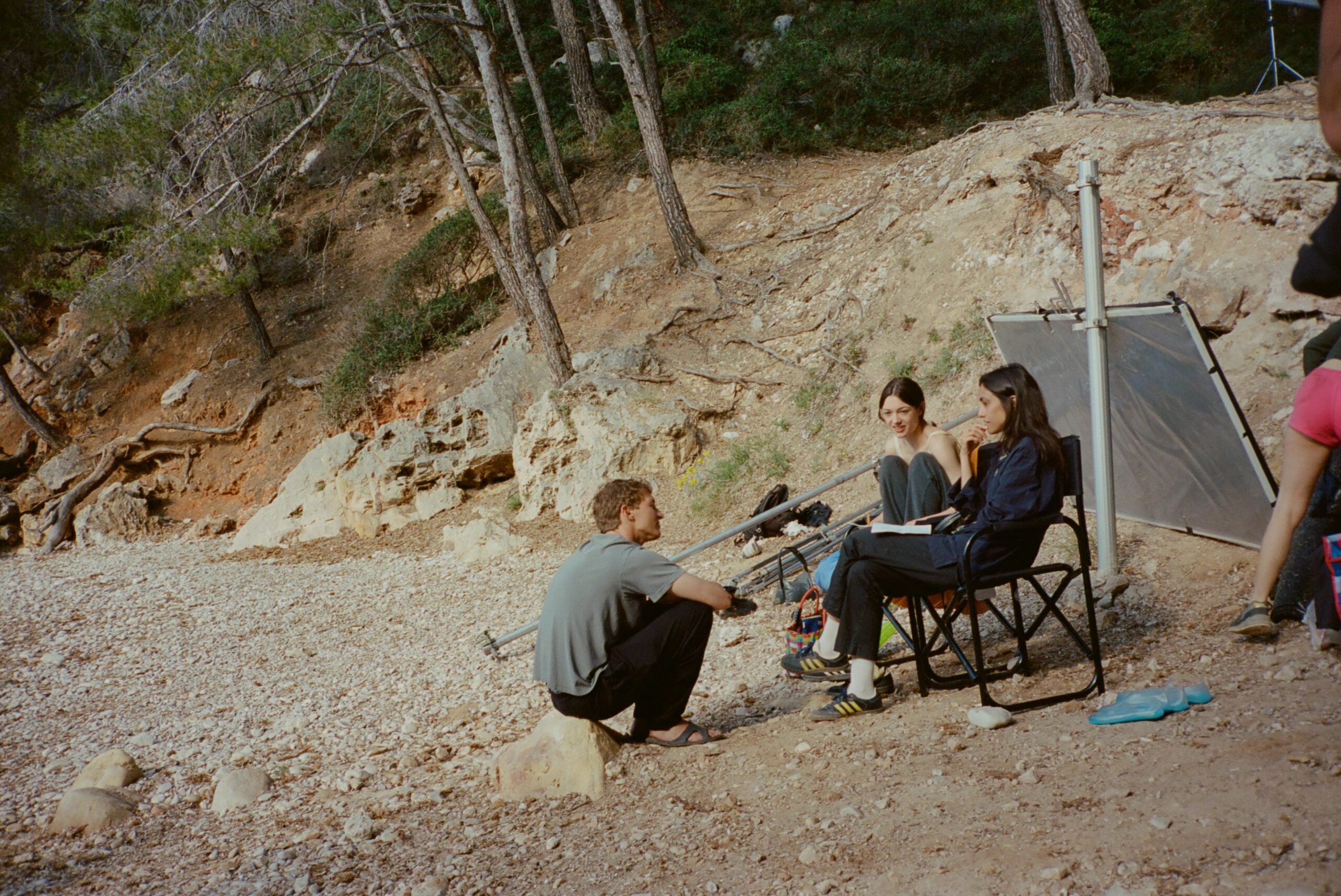
Behind the Scenes of Bonjour Tristesse, photographed by Miyako Bellizzi.
CHEW-BOSE: Our cinematographer was Maximilian Pittner. From the very beginning, our relationship was based on watching movies. We would watch movies and then get on a call and talk about them, regardless of whether it was going to be a direct inspiration for how we were going to shoot our film. It was a way to create a language between myself and him. He knew very early on that I really love stillness, that I like to let the scene happen and walk away from a camera. I also learned a lot from him about how to enhance a scene that was written with a lot of stillness. If one scene felt more like a play, we wanted the next scene to interrupt the natural breathing cycle that one develops when you’re watching a movie. So we talked a lot about that and also palettes and colors we don’t like. At one point we realized the film was going to be very white, blue, and brown, for no other reason than at the location we picked, the rocks were much whiter than orange. And we learned early on that I don’t like green. These little peccadilloes and things you develop, you don’t have any real reason for them, but you have your small team making your film and you kind of live by these codes.
SCARABELLI: I want to ask if you felt you were able to adapt your experience as an editor into the filmmaking process. For me it feels similar in a lot of ways, you have to assemble a team, provide guidance…
CHEW-BOSE: In some ways I found it was really similar because early on as an editor, it’s really important to experience doubt and uncertainty and not think you’re right all the time. And then also to encourage others, especially your writers, to explore that thing they’re not saying, or that weird pursuit they’re doing and not writing about. I thought the same process was true in making the movie, listening for the thing that no one’s saying and then encouraging them to say it. I mean, I was the least experienced on set by a country mile. So I think my job was to just pay attention, and in listening, make choices.
SCARABELLI: How did you navigate being both the director and the least experienced person on set?
CHEW-BOSE: On paper it’s very daunting, but in reality everything’s happening so fast, and it’s not about you, so you can’t spend time wondering what you might seem like or whatever. I don’t know if it was an insecurity or if it’s just my personality, but I actually just spent a lot of time getting to know the crew. I think my way of not always knowing what the director should be doing at that moment, other than probably just sitting and getting on their feet, was just loitering and learning who everyone was and who their families are and what they were up to.
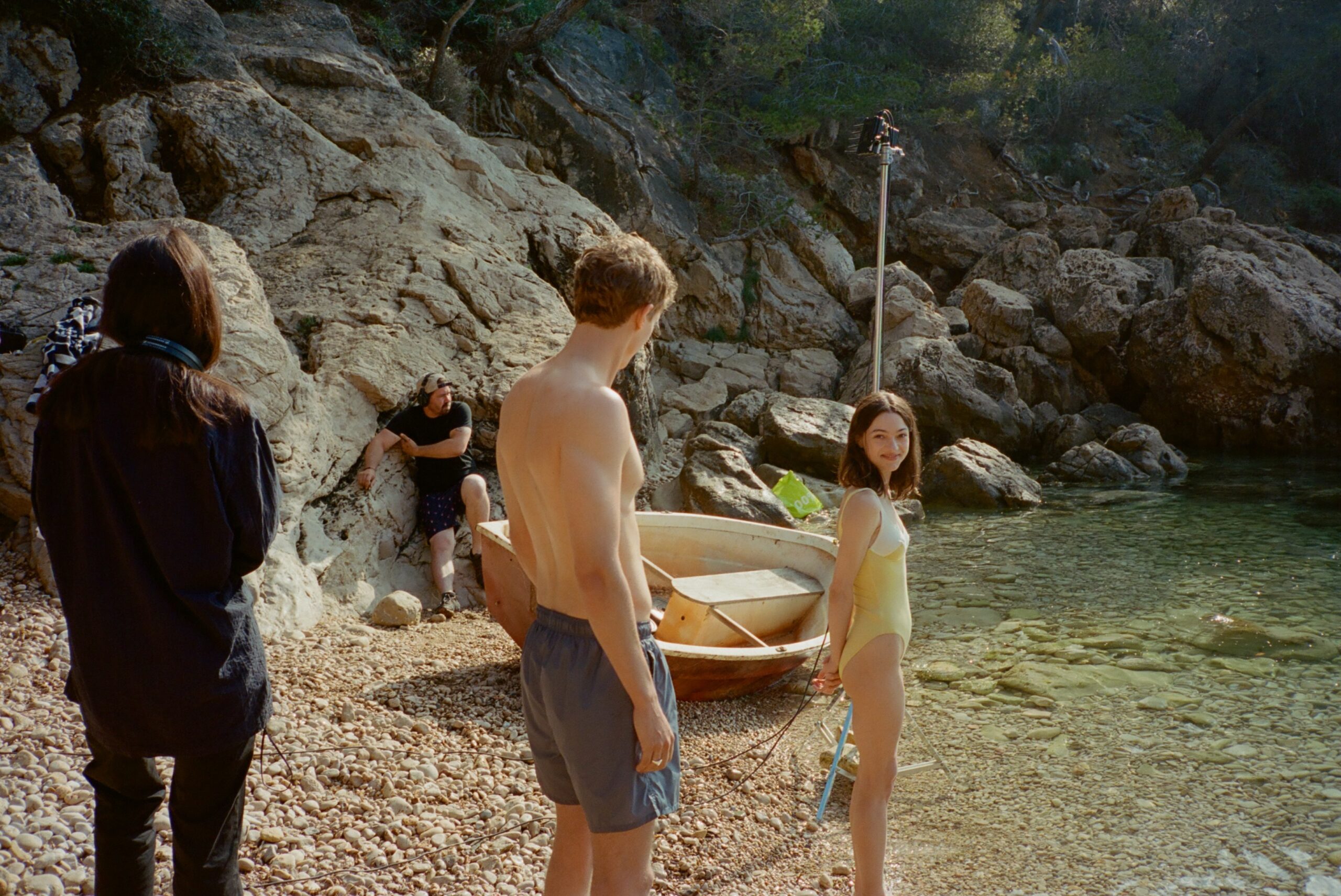
Behind the Scenes of Bonjour Tristesse, photographed by Miyako Bellizzi.
SCARABELLI: And how about with the actors? Do you like to provide a lot of direction or are you more hands-off?
CHEW-BOSE: It really depends on each person. Some people are very clear on what they want and their needs, and you have to meet them there in order to make sure they feel safe and supported. And I think wordlessness can go a long way between takes. So speaking quickly and clearly was helpful, but there were moments where I felt there was a drill sergeant in me and that was all wrong. I had to shed that really early on and understand that there’s so much human energy that cannot be bottled to create an end product. You have to be in the moment, which is something I find very hard to do.
SCARABELLI: Yeah, I mean it’s an interesting transition from that really interior process of being a writer to this kind of explosive, team-oriented project. Speaking of teams, how was it working with Miyako Bellizzi? We have to talk about the costumes.
CHEW-BOSE: I love watching Miyako come up with ideas. I love her trove of movie references and fashion history and just everyday dressing and her relationship to characters and uniforms and a single item. All of it is just completely captivating for me. I could just listen to her work through why one dress will work and one won’t for hours. We were living together for a bit during pre-production, and she would come back with these massive bags just stuffed with ideas. She knows you need a lot in front of you in order to edit, and I love her process. I had some very clear ideas, but then it was like, “Am I actually under Miyako’s influence now?” We became part of this soup. But she was definitely a guide and even beyond costume. Often I would ask her to stand by the monitor with me if we had a lot of extras on set because she’s really good at just placing people. Her instincts with casting are really strong too.
SCARABELLI: That makes sense because the costume does so much for the character. Seeing Chloë Sevigny in the sweltering heat in the south of France wearing some kind of cocoon blazer situation is just the perfect amount of over the top.
CHEW-BOSE: It’s a lot. [Laughs]
SCARABELLI: It is, but it tells you everything you need to know about that character. Did you work with anyone specific to create the clothing that Anne [Sevigny’s character] designs?
CHEW-BOSE: Our friend Cynthia Merhej who is the head of this label, Renaissance, Renaissance. She made Anne’s designs. It’s also her drawings that Anne is looking through in the film. Her stuff is very romantic, costume-y, and there’s a flair to how she designs for the woman’s body that I find really evocative. Cynthia is also a friend, so the creative process was very intuitive and full of trust.
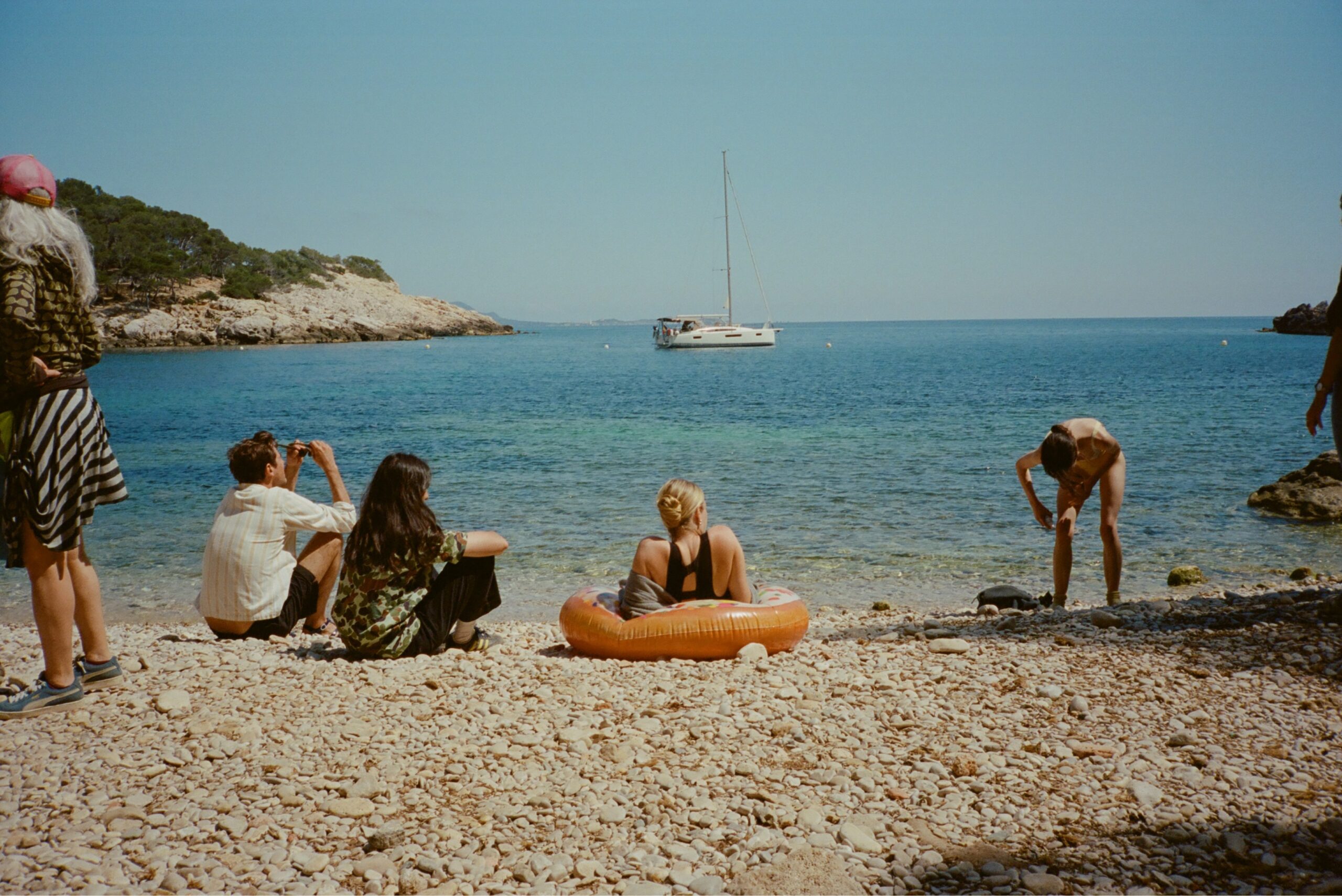
Behind the Scenes of Bonjour Tristesse, photographed by Miyako Bellizzi.
SCARABELLI: When the book came out, it was so controversial and it was like this 18-year-old girl in this very kind of liberated, but at the time amoral situation. What does that story mean for you in 2025, and how does it change and what are you trying to get across in this film?
CHEW-BOSE: It’s funny because when I reread the book before starting to write the script, and this is going on nine years ago, I understood why it was then perceived as super scandalous, but those were not the parts that moved me. It was the fact that the book was entirely centered around a young woman’s ability to volley between yes and no constantly, and how that was a tribute to that space and time. She wasn’t decisive, she was angry, she was sad, and it was just a whirlwind to read. I also found it quite quiet in some ways because it is so observational. In that way, I found François Sagan’s book to be so contemporary and so modern and so prescient that the why now question was so easy. I feel like I was just translating it into my voice, if that makes sense. I don’t know what it means nowadays to tell scandalous stories. And I personally am not sure if that interests me because I’m not sure what the effect of scandal is in terms of making art. I like a book that you think about long after you’re done reading it. Immediacy has never really been a metric for me, and I feel like scandal is sometimes entwined with that. And so I wanted to find a way in with this version that took its time. To me, that feels scandalous now.
SCARABELLI: I also feel like we get that in the end—she dyes her hair blonde, she’s trying to emulate Anne, but she still doesn’t really know what type of woman she is or wants to be. It feels ambiguous, which I appreciate.
CHEW-BOSE: Yeah. I think that so much of coming into yourself is fraught and inelegant and not scandalous. It’s actually quiet and humiliating. And I think the way being a young woman is portrayed right now, especially in pop culture, doesn’t always ring true to me. I also love seeing young people around only adults. I love a generational dynamic. And I wanted to make that very clear in our film too.
SCARABELLI: I mean, it’s all about the strive to become an adult and what happens when you try to do that too soon. Just the push and pull of Cecile being both so naive and also so in tune with what’s going on around her—I think we can all relate to that.
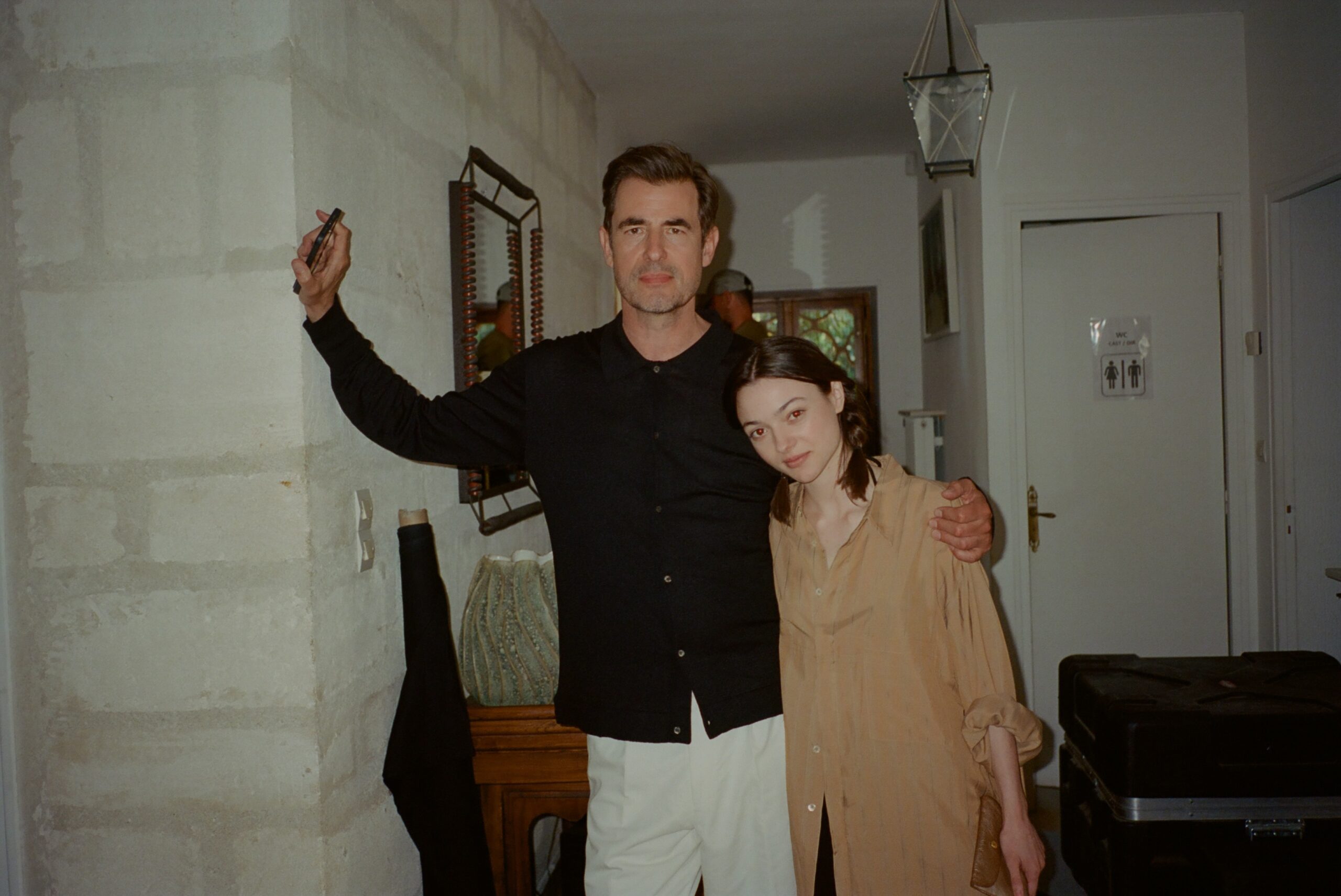
Behind the Scenes of Bonjour Tristesse, photographed by Miyako Bellizzi.

